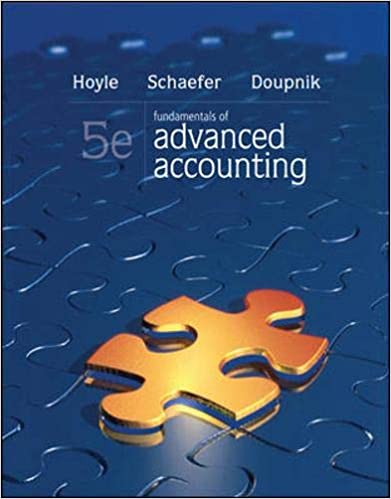
Fundamentals of Advanced Accounting 5th Edition by Joe Ben Hoyle,Thomas Schaefer,Timothy Doupnik
Edition 5ISBN: 978-1260575910
Fundamentals of Advanced Accounting 5th Edition by Joe Ben Hoyle,Thomas Schaefer,Timothy Doupnik
Edition 5ISBN: 978-1260575910 Exercise 18
Purkerson, Smith, and Traynor have operated a bookstore for a number of years as a partnership. At the beginning of 2013, capital balances were as follows:

Due to a cash shortage, Purkerson invests an additional $8,000 in the business on April 1, 2013.
Each partner is allowed to withdraw $1,000 cash each month.
The partners have used the same method of allocating profits and losses since the business's inception:
• Each partner is given the following compensation allowance for work done in the business: Purkerson, $18,000; Smith, $25,000; and Traynor, $8,000.
• Each partner is credited with interest equal to 10 percent of the average monthly capital balance for the year without regard for normal drawings.
• Any remaining profit or loss is allocated 4:2:4 to Purkerson, Smith, and Traynor, respectively. The net income for 2013 is $23,600. Each partner withdraws the allotted amount each month.
What are the ending capital balances for 2013

Due to a cash shortage, Purkerson invests an additional $8,000 in the business on April 1, 2013.
Each partner is allowed to withdraw $1,000 cash each month.
The partners have used the same method of allocating profits and losses since the business's inception:
• Each partner is given the following compensation allowance for work done in the business: Purkerson, $18,000; Smith, $25,000; and Traynor, $8,000.
• Each partner is credited with interest equal to 10 percent of the average monthly capital balance for the year without regard for normal drawings.
• Any remaining profit or loss is allocated 4:2:4 to Purkerson, Smith, and Traynor, respectively. The net income for 2013 is $23,600. Each partner withdraws the allotted amount each month.
What are the ending capital balances for 2013
Explanation
(Allocate income and...
Fundamentals of Advanced Accounting 5th Edition by Joe Ben Hoyle,Thomas Schaefer,Timothy Doupnik
Why don’t you like this exercise?
Other Minimum 8 character and maximum 255 character
Character 255


